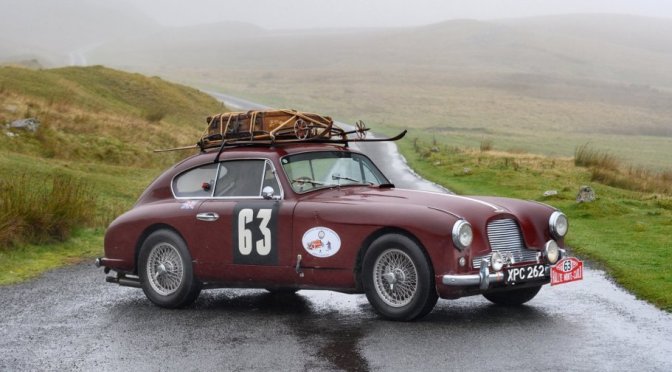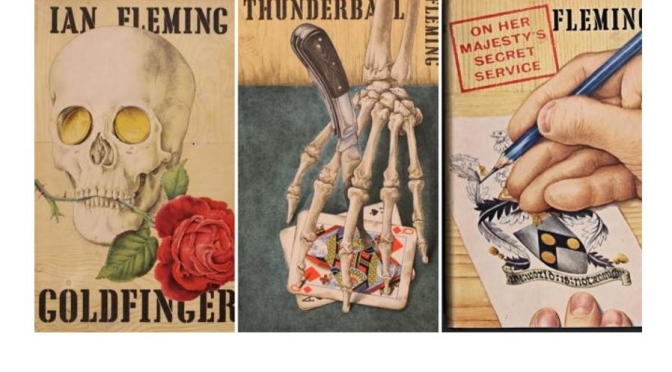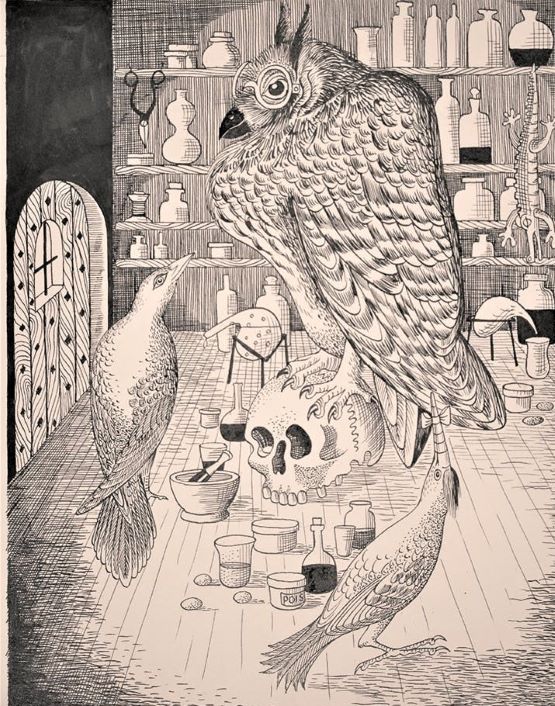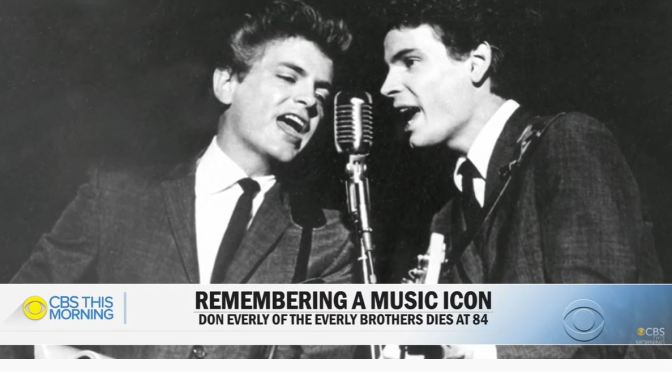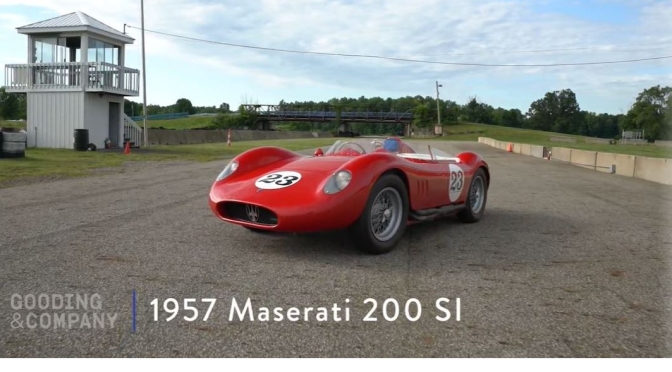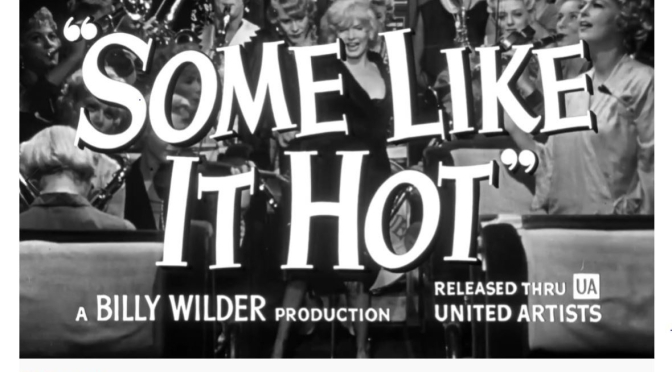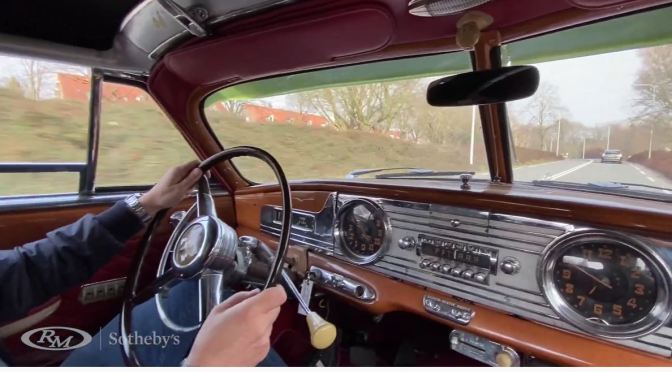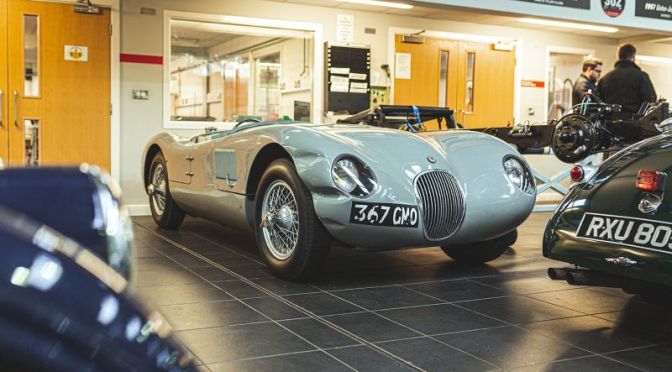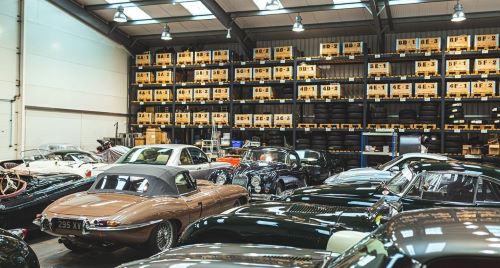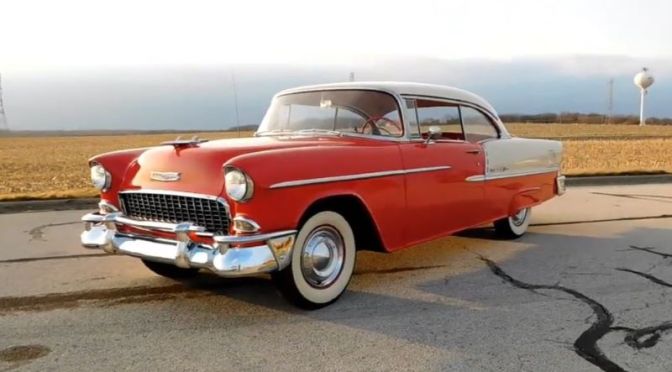In 1955 this glorious Aston Martin DB2/4 Mk1 was purchased new by Ken Carter, a former Works driver for the Cooper racing team, who acquired this very car to compete in the 1956 Monte Carlo Rally with his friend Robert Ropner. Join Commander Timothy ‘Tiny’ Brompton-Belcher RN and Aston Martin specialist Dylan Miles and take a journey back in time with this wonderfully historic Aston Martin
Tag Archives: 1950’s
Views: ‘Richard Chopping: The Original Bond Artist’

In April 1956, at the suggestion of his friend Francis Bacon, Richard Chopping took the society hostess Ann Fleming to see some of his trompe l’oeil paintings, which were then on show at the Arthur Jeffress Gallery in Mayfair. Impressed by these pictures, Fleming invited the artist to meet her husband, Ian, who was looking for someone to provide dust-jacket illustrations for his James Bond novels.

31 AUGUST 2021

Chopping was immediately offered the job, and his striking designs remain the work for which he is best known and are, for many collectors, the reason the novels are particularly prized.
As this small but imaginatively curated exhibition demonstrates, there was a great deal more to Chopping than James Bond. Nevertheless, the highly detailed, finely executed and often macabre paintings he produced for Fleming are characteristic of his work as a whole. Born in Essex in 1917, Chopping moved to London at the age of 18 with little idea of what he wanted to do, but soon got a job on the magazine Decorations of the Modern Home.
Tributes: Don Everly Of ‘Everly Brothers’ Dies At 84
Pioneering rock ’n’ roll musician Don Everly of The Everly Brothers has died at 84. The legendary duo is credited for influencing a spectrum of musical acts like the Beatles to Simon & Garfunkel and more recently Green Day’s Billie Joe Armstrong and Norah Jones.
Italian Racing Cars: 1957 Maserati 200 SI (Video)
Introduced in 1955, the Maserati 150, 200, and 250 series of sports racers were geared towards privateer owners, featuring a four-cylinder engine connected to a four-speed, and later five-speed, gearbox.
The 1957 Maserati 200 SI offered here, chassis 2423, was completed on June 13, 1957 and sent by Maserati Corporation of America to Houston. This example has been used sparingly on the road since then, and comes accompanied by an extensive history file and large cache of spare parts, including the original riveted fuel tank and two sets of Borrani wheels. An alluring choice for both collectors and racers alike, this rare and capable 200 SI is eminently eligible for a number of important road rallies, including the Mille Miglia, possibly the world’s greatest vintage motoring event. As an exceptionally desirable Maserati 200 SI with known history from new, 2423 represents a rare opportunity to buy a gorgeous, versatile, and potent 1950s Italian sports racer.
1950’s: A ‘Moral Panic’ That Targeted Comic Books
Comic books have been a staple of American pop culture for the better part of 90 years. The origin story of comics as we know them, however, is much more complicated. In the 1950s, a moral panic swept across the country — one in which parents and children burned comic books by the bushel in public gatherings — and led to the near destruction of the comic book industry. Comics were big business even by the 1940s. They reached millions of readers each week. And the superheroes created then have now become billion-dollar franchises, showcased in blockbuster films and massive conventions such as Comic-Con. Events in 1954, however, almost changed that. Laws were passed. Careers were ruined. And comics fell under a strict censorship regime that lasted for decades to come.
Automobiles: Decline Of The American Convertible
Rising in popularity in the 1950s and 1960s, the convertible car is an automotive American icon. It was a vehicle meant for leisure and fun. Some of the most iconic models throughout history were convertibles, such as the Chevrolet Corvette and the Ford Mustang. However, in the last few years, convertibles have been slowly declining in popularity. Along with rising prices, American car buyers, especially those with children, value practicality and functionality over looks and leisure, leading their interest towards SUV’s and midsize sedans. In 2021, convertibles make up only 0.46% of new car sales. Can the iconic design stand the test of time?
Classics: ‘Some Like It Hot’ – Marilyn Monroe, Tony Curtis & Jack Lemon (1959)
After witnessing a Mafia murder, slick saxophone player Joe (Tony Curtis) and his long-suffering buddy, Jerry (Jack Lemmon), improvise a quick plan to escape from Chicago with their lives. Disguising themselves as women, they join an all-female jazz band and hop a train bound for sunny Florida. While Joe pretends to be a millionaire to win the band’s sexy singer, Sugar (Marilyn Monroe), Jerry finds himself pursued by a real millionaire (Joe E. Brown) as things heat up and the mobsters close in.
Some Like It Hot (1959)
Directed by: Billy Wilder
Written by: Billy Wilder and I.A.L. Diamond
Cast: Marilyn Monroe, Tony Curtis, Jack Lemmon
Views: A ‘1950 Hudson Commodore Eight Convertible Brougham’
1950 Hudson Commodore Eight Convertible Brougham
Lot Location: Tilburg, Netherlands
Hudson’s step-down cars for 1948 marked a new direction for the company, as it had a partially unitary design, with the floor pan on the bottom of the frame rather than on the top, resulting in one literally stepping down to enter a Hudson. There was an all-new six-cylinder engine, but the legacy straight eight, which had been continually updated since its introduction in the 1930s, was also carried over. Its low center of gravity made for excellent handling, for which step-downs are still revered.
The new cars bowed on December 7, 1947. “You’re face to face with tomorrow,” said the ads, and “this time it’s Hudson.” Both dealers and the public were elated. The roof was low, but there was still plenty of room inside. Sales jumped nearly 50 percent over 1947, and Hudson rose from 13th to 11th place in the market.
Incremental internal improvements were made to the engines for 1949, and for 1950 the grilles and taillights were updated. Genuine leather was used on convertible interiors, and an electro-hydraulic power top and windows were standard.
Classic Cars: Restoring The ‘Finest Jaguars’ At CKL Developments In Engand

“It’s a privilege to work with these fantastic cars,” enthuses James “and we benefit from incredible craftsmen and Chris’ vast experience. These are important cars, looked after sympathetically. When we restore cars, we’re careful and fastidious in retaining the soul, but we also understand that cars evolve”.
In keeping with the colour British Racing Green, CKL Developments prides itself on being understated, not flashy. Inside a pristine brace of high-roofed, modern industrial units near Hastings, in Britain’s East Sussex countryside, you’ll find cars that are maintained to be enjoyed, driven and raced.
CKL is not, the team is at pains to point out, a museum. It’s the absolute authority on Jaguar-engined sports cars of the ’50s and ’60s and looks after some of the most historic and important British cars of that era, sympathetically restored, preserved of soul and performing at their zenith. The team can service, restore, repair, prepare, race, build, sell, store and transport your pride and joy as required.
Classic Cars: The ‘1955 Chevrolet Bel Air’ (Video)
The 1955 Chevrolet (sometimes referred to as ‘55 Chevy) is an automobile which was introduced by Chevrolet in Autumn 1954 for the 1955 model year. It is considered a huge turning point for the manufacturer and a major success. It was available in three models: the 150, 210, and Bel Air.
The ’55’s top trim offering was the Bel-Air, which had more chrome than the 150 or 210. The Bel-Air, 210 and 150 model could be bought as a four-door, or could be bought as a two door with a post between the front and rear passenger windows, known as the two-door sedan.
The Bel-Air or 210 model could also be had as a two door with no post between the side windows. This was known as the sport coupe, or better known by collectors as “the two door hardtop”. Since this model had no post between the two side windows, it had a shorter roof and longer rear deck than the two door sedan had. Chevy also offered a convertible, with the same shorter roof and longer rear deck as the sport coupe, and it was offered in Bel-Air trim only.
1955 also saw the introduction of the Bel Air Nomad, a sporty two-door station wagon which featured frameless door glass and elongated side windows. The unique roof design of the Nomad came directly from the 1954 Corvette Nomad, a “dream car” designed to be shown at auto shows as a concept sport wagon. Although regarded as one of the most beautiful station wagon designs of Fifties, the Nomad sold poorly, partly due to its price tag (one of the most expensive models in the Bel Air lineup) as well as its lack of four doors. Also the Nomad’s two-piece tailgate design was prone to let excess rainwater leak through to the interior.
The ’55 offered a wide array of colors. One solid color, which was standard for the 150, could be had for the 210 or Bel Air…or nineteen different two-tone color combinations were also available.

